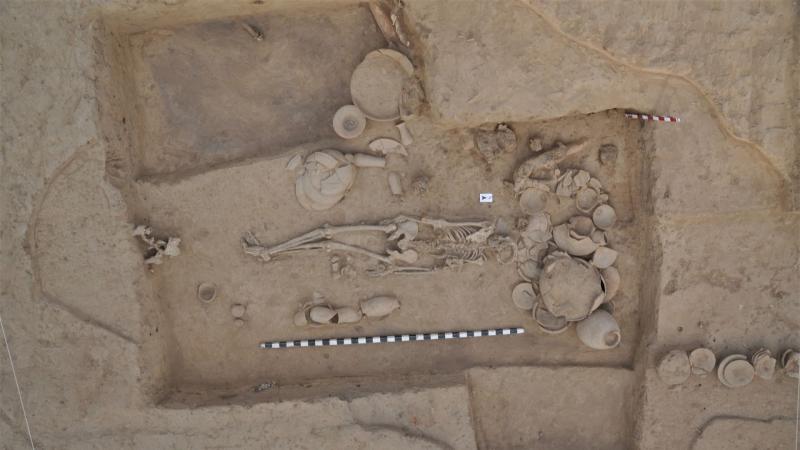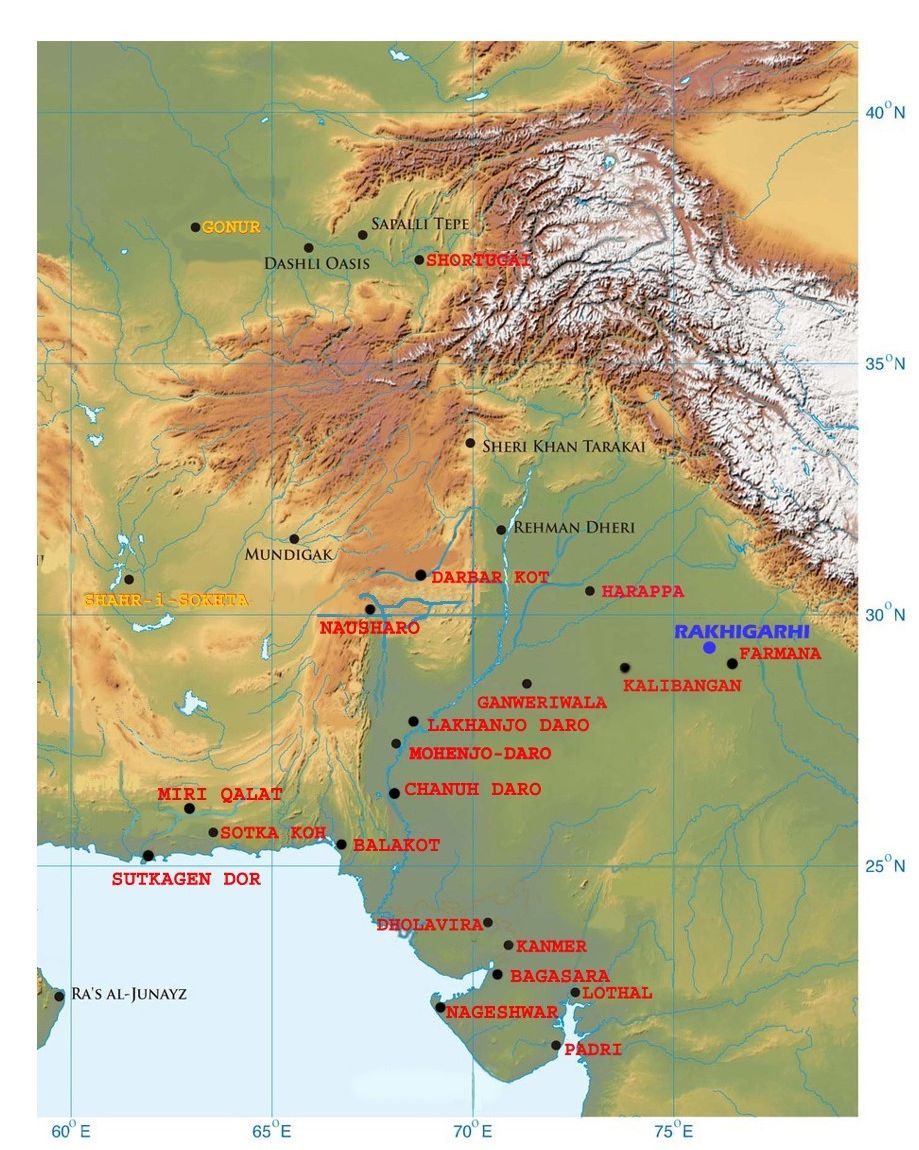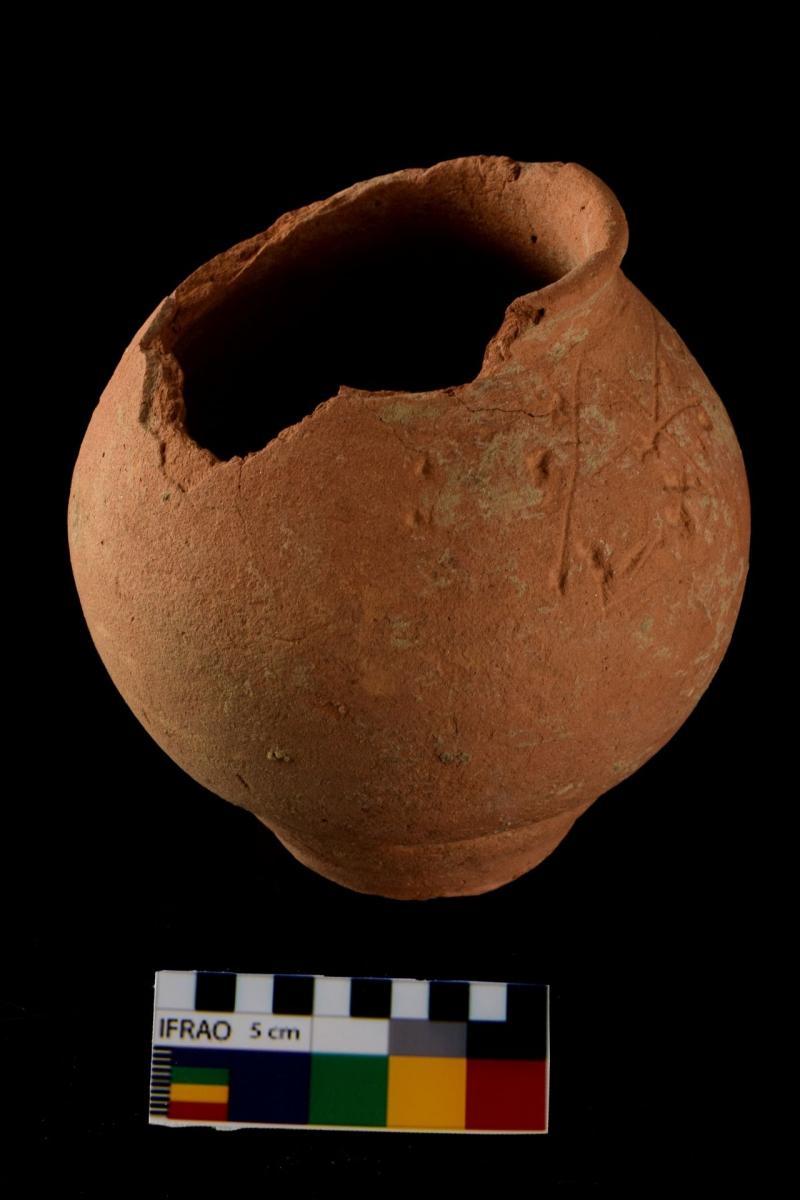
We have all heard of the Indus Valley Civilisation, an ancient Bronze Age civilisation that thrived in the northwestern regions of South Asia in the third millennium BCE. It is well known for its granaries, drainage systems and systematically planned cities like Harappa and Mohenjodaro. However, not much is known about its rise and fall; although there are various theories. Historians have not reached consensus on many aspects of this period as its script remains undeciphered, hiding the facts. The lives of the antecedents and successors of the Indus people also remain shrouded in mystery.
In a pair of new studies published in the journals Science and Cell, a consortium of international researchers, including those from India, have tried to decipher the origins of present-day Central and South Asian people. They have used recent advances in genetics to extract and analyse genetic material (DNA) from the remains of several ancient populations, including people from the Indus Valley Civilisation.

Figure 1: Geographical span of the Indus Valley Civilisation. [Image credits: Vasant Shinde]
In the study titled The formation of human populations in South and Central Asia, the researchers investigate where the people of the Indus Valley Civilisation came from, and the ancestry of the present-day Indians. The researchers used genetic data from 523 ancient humans from sites across South and Central Asia to piece together a comprehensive picture of the origins of the present-day population of South Asia.
The study found that the people of the Indus Valley Civilisation did not descend from the early farmers of the Fertile Crescent. However, they still had ancestry in another Iranian-related hunter-gatherer population.
"We 'don't know where that population lived. It could have been in South Asia or some unsampled location in the Iranian plateau," says Dr Vagheesh Narasimhan in an interview with Research Matters. He is a researcher at the Department of Genetics, Harvard Medical School, USA and the lead author of the two studies.
If we look at the present-day South Asians, a majority of their ancestors are the people of the Indus Valley Civilisation. Following the decline of the Indus Valley Civilisation, around 2000 BCE, two distinct populations were formed when the Indus Valley people mixed with others.
Firstly, the Ancestral South Indian (ASI) population, which was formed by a mixture of the Indus Valley and the ancient ancestral South Indian population. On the other hand, the Ancestral North Indian (ANI) population was formed by a mixture of Indus Valley people with the Steppe pastoralists from the Eurasian Steppes. The Steppe pastoralists were nomads from the steppes, a temperate zone stretching from modern-day Bulgaria in the west through Manchuria in the east. Steppe ancestry arrived in South Asia between 1900 and 1500 BCE. The present-day Indian population is a mixture of these two source populations - Ancestral South Indian (ASI) and Ancestral North Indian (ANI).
The study also throws some insights into how the Steppe pastoralists made their way into South Asia. The researchers looked at the inheritance of the Y chromosome—a sex chromosome found only in males and passed on from father to son. They combined information from the Y chromosome and non-sex chromosomes to see that the Steppe ancestry was introduced into South Asia predominantly by males.
A significant implication of the findings is the understanding of the spread of the Indo-European language family. This family includes Latin-derived languages like Spanish, Sanskrit-derived languages like Hindi and English among several others.
"Our results provide evidence for a significant movement of people into Europe and South Asia in the Bronze Age in a manner that mirrors the shared features of certain Indo-European languages with others. Steppe pastoralist related ancestry spread across Eurasia in the Bronze Age in a manner that parallels specific shared features between different Indo-European language families", explains Dr Narasimhan.
Interestingly, the Steppe ancestry is very high among Brahmin and Bhumihar groups. Since Brahmins were the traditional custodians of liturgy in Sanskrit, the high Steppe ancestry indicates a Bronze Age Steppe origin for South Asia's Indo-European languages.

Figure 2: A Red Slipped ware globular pot placed near the head of the skeleton that yielded ancient DNA. [Image Credit: Vasant Shinde]
The two studies provide a reasonably precise chronology thanks to radiocarbon dating. It is a technique of determining the age of an object by looking at the radioactive carbon isotopes. The proportion of radioactive carbon (C-14) to ordinary carbon (C-12) in organic matter tells us how long it has been dead. Because, once it is dead, it would have stopped exchanging carbon with the environment.
"One of the major results of our study is the reporting of 269 new radiocarbon dates directly on human bone, for which ancient DNA data and the archaeological context of the samples are available," remarks Dr Narasimhan.
The study is the first-of-its-kind to use ancient DNA samples to paint the history of today's Indians.
"In this part of the world, where there has been a paucity of such dates, this new information helps us to synchronise the chronology of different parts of this broad region and describe the interaction, archaeologically and genetically," opines Prof. Narasimhan.
In a companion study titled An Ancient Harappan Genome Lacks Ancestry from Steppe Pastoralists or Iranian Farmers, the researchers analysed DNA from the skeletal remains of an individual found in Rakhigarhi cemetery, situated in present-day Haryana. Rakhigarhi was one of the largest cities of the Indus Valley Civilization. Their findings provide insights into the origin of farming in South Asia.
One of the most definitive milestones in human history is our transition from nomadic hunter-gatherers to settled agriculturists. This change depended not only on technological advances but also how people lived and related to each other. Farming is known to have originated in the Fertile Crescent—a semicircular region in the Middle East from the Meditteranean Sea to the Persian Gulf. Historians have long wondered how it then spread to other parts of the world. Was it through large scale human migrations, or did it develop independently?
The DNA analysis of the Indus Valley individual indicates no ancestral relationship with the farmers in the Fertile Crescent.
"Our results suggest that the advent of farming in South Asia was not mediated by significant movements of people from the Near East or Western Iran," says Prof. Narasimhan. The study also does not show any evidence of Steppe pastoralist ancestry, providing further evidence that the Steppe pastoralists only arrived much later in South Asia.
Does this mean farming was independently invented in South Asia?
"While our data could be consistent with this scenario, they are also entirely consistent with people copying farming technology from their neighbours through a process of cultural diffusion," explains Prof Narasimhan.
He suggests the need for additional DNA analysis of humans and domesticated crops from these regions to conclusively prove how agriculture developed in the Indus Valley.
This article has been run past the researchers, whose work is covered, to ensure accuracy.





